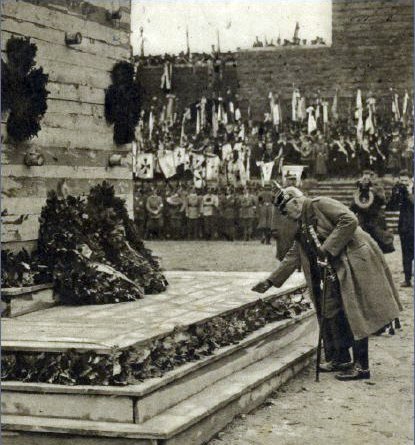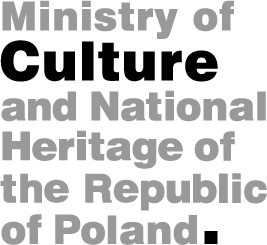|
|
a new national symbol The triumphal victory of the Germans under Tannenberg and the cult of Marshal Hindenburg created a symbolic monolith in the social perception of a considerable number of the East-Prussians. Quoting the words of Robert Traba: "Germans found the Tannenberg Monument at the central point of the war landscape and the symbol of East Prussia. It was not only the architectural shape of the entire architectural complex, created with a grandiose gesture, but also the frequency with which its image or metaphor, coined in literature or utilised by the press, was used as a symbol of heroism and patriotism. The extraordinary character of the monument provoked respect even from such an ardent opponent of German rule in East Prussia as Melchior Wańkowicz. In his collection of reports in Na tropach Smętka in 1936, he wrote with unveiled admiration: "However, when I saw the monument – after God knows how many times – I realised that whatever comes from the spirit of a given nation is never ugly, as the soul of any nation can never be ugly, being as beautiful as a plant is, which freely springs up from the ground. The Tannenberg Monument grew from the very depth of the German spirit. Numerous excursions of young German people stand in front of the monument – orderly, concentrated, their faces moved by emotion. They rode or came on foot here for several hundreds of kilometres, setting off from the North-Rein vineyards, where life is so joyous. However, the sons of these lands fell in a tough battle. And the young travel to feed on the glory of their Homeland, feed on the consciousness of its greatness. In huge bastions, from the bottom up to the high, vanishing peaks, hang the flags of regiments which took part in those glorious days. Bronze and marble plaques are everywhere, dedicated to fallen friends by unions of the former members of famous regiments. The numbers on the plaques indicating losses and dates of heroic deeds. The 59th reg. (Deutsch-Eylau) lost its 28 officers and 1300 soldiers in an attack... A mute, frozen paean of the heroic will to win." Andreas Kossert writes about Tannenberg in his book Mazury. Zapomniane Południe Prus Wschodnich : "Tannenberg – since those August days in 1914, there has not been a single German citizen to whom the name of this village would mean nothing. This name has reached all the nooks and crannies of Germany". The author of a guidebook from 1936, describes Tannenberg in a bombastic style and with much grandiosity, emphasising that from that moment on, the history of the world, through that gigantic motion, had given an absolutely new character to the East-Prussian south. "After all, an appeal is addressed to our hearts to visit Masuria, our homeland – a land which is most German in its areas of woods and lakes, and which must become a necropolis for the most meritorious German heroism, the most important destination of German pilgrimages. Whoever is dreaming over the graves of the Tannenberg heroes in a dark wood now, he will miraculously gain the feeling of certainty that, amidst a non-apprehended comeliness, the history of these sanctified places guards the German 'Shrine of a Sleeping Beauty'. Tannenberg is a place treated as a symbol of German dominance and the fight against the Slavs, the place of a future Grand German Reich of which these people once dreamt." Translated by Marzena Beata Guzowska
|

President von Hindenburg pays tribute to fallen soldiers during the inauguration of the memorial. 
Paul von Hindenburg's bronze effigy by Friedrich Bagdons. |
|||
| |||||
